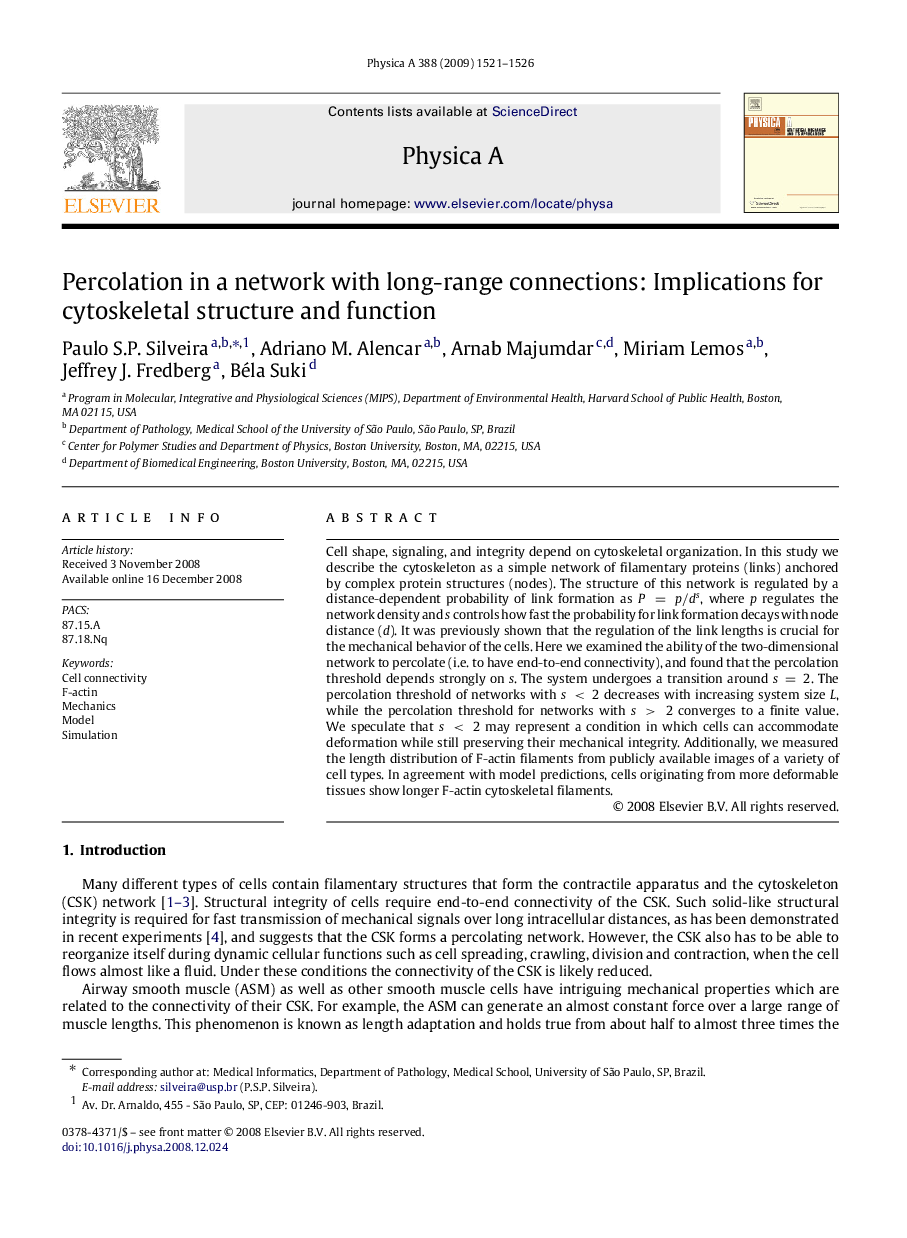| Article ID | Journal | Published Year | Pages | File Type |
|---|---|---|---|---|
| 974704 | Physica A: Statistical Mechanics and its Applications | 2009 | 6 Pages |
Cell shape, signaling, and integrity depend on cytoskeletal organization. In this study we describe the cytoskeleton as a simple network of filamentary proteins (links) anchored by complex protein structures (nodes). The structure of this network is regulated by a distance-dependent probability of link formation as P=p/dsP=p/ds, where pp regulates the network density and ss controls how fast the probability for link formation decays with node distance (dd). It was previously shown that the regulation of the link lengths is crucial for the mechanical behavior of the cells. Here we examined the ability of the two-dimensional network to percolate (i.e. to have end-to-end connectivity), and found that the percolation threshold depends strongly on ss. The system undergoes a transition around s=2s=2. The percolation threshold of networks with s<2s<2 decreases with increasing system size LL, while the percolation threshold for networks with s>2s>2 converges to a finite value. We speculate that s<2s<2 may represent a condition in which cells can accommodate deformation while still preserving their mechanical integrity. Additionally, we measured the length distribution of F-actin filaments from publicly available images of a variety of cell types. In agreement with model predictions, cells originating from more deformable tissues show longer F-actin cytoskeletal filaments.
